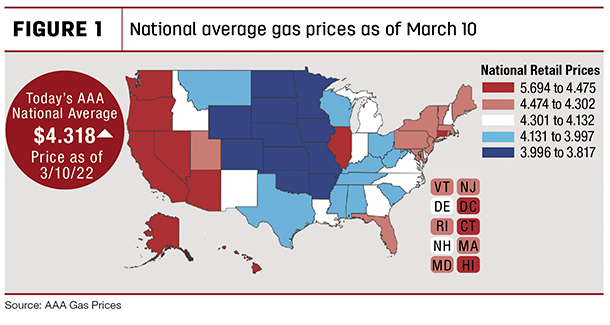The U.S. will no longer receive Russian energy exports, President Joe Biden announced March 8. The ban on Russian oil, liquefied natural gas and coal is the latest in several retaliatory sanctions against Russian international commerce following the invasion of Ukraine in late February.
According to a statement from the White House, this ban is a step toward reducing global dependence on Russian energy resources while also putting more financial pressure on Putin to cease Russian aggressions in Ukraine. In addition to banning Russian products, it also prohibits U.S. investment in Russia’s energy sector, whether through government programs or private companies.
So far, the U.S. stands alone in the ban on Russian energy. Since Russia supplies about 40% of Europe’s natural gas for electricity, heating and industry use, an energy ban from the EU is highly unlikely. Though British authorities have announced they will be phasing out imports of Russian oil and petroleum products over the course of the next year to give the economy and markets time to adjust and find new resources.
Since Russia invaded Ukraine, energy prices in the U.S. have skyrocketed. According to AAA, the national average gasoline price surpassed $4 per gallon on March 6, the highest level since July 2008. At press time for this article, the national average has increased to $4.32 per gallon. As of March 10, the national average has increased to $4.32 per gallon, with U.S. consumers paying 64 cents more per gallon of gas than they did the week before and 84 cents more per gallon than they did a month earlier (Figure 1).

To provide perspective, crude oil was selling for about $90 per barrel in February – and by mid-March, prices rose past $130 per barrel. Energy analysts project that crude oil prices could reach $200 per barrel with Russian crude oil off the market, and if that happens, U.S. consumers could be paying around $5 per gallon at the pump.
The Biden administration has committed to releasing more than 90 million barrels from the Strategic Petroleum Reserve this fiscal year, but that is only a short-term solution. As Biden and his staff have stated, the U.S. ban on Russian energy is only possible because of the strong domestic production of oil and natural gas, but is the U.S. energy production sector strong enough? The question now is where replacement imported resources will come from, and how U.S. energy production will respond to the increased pressure.






